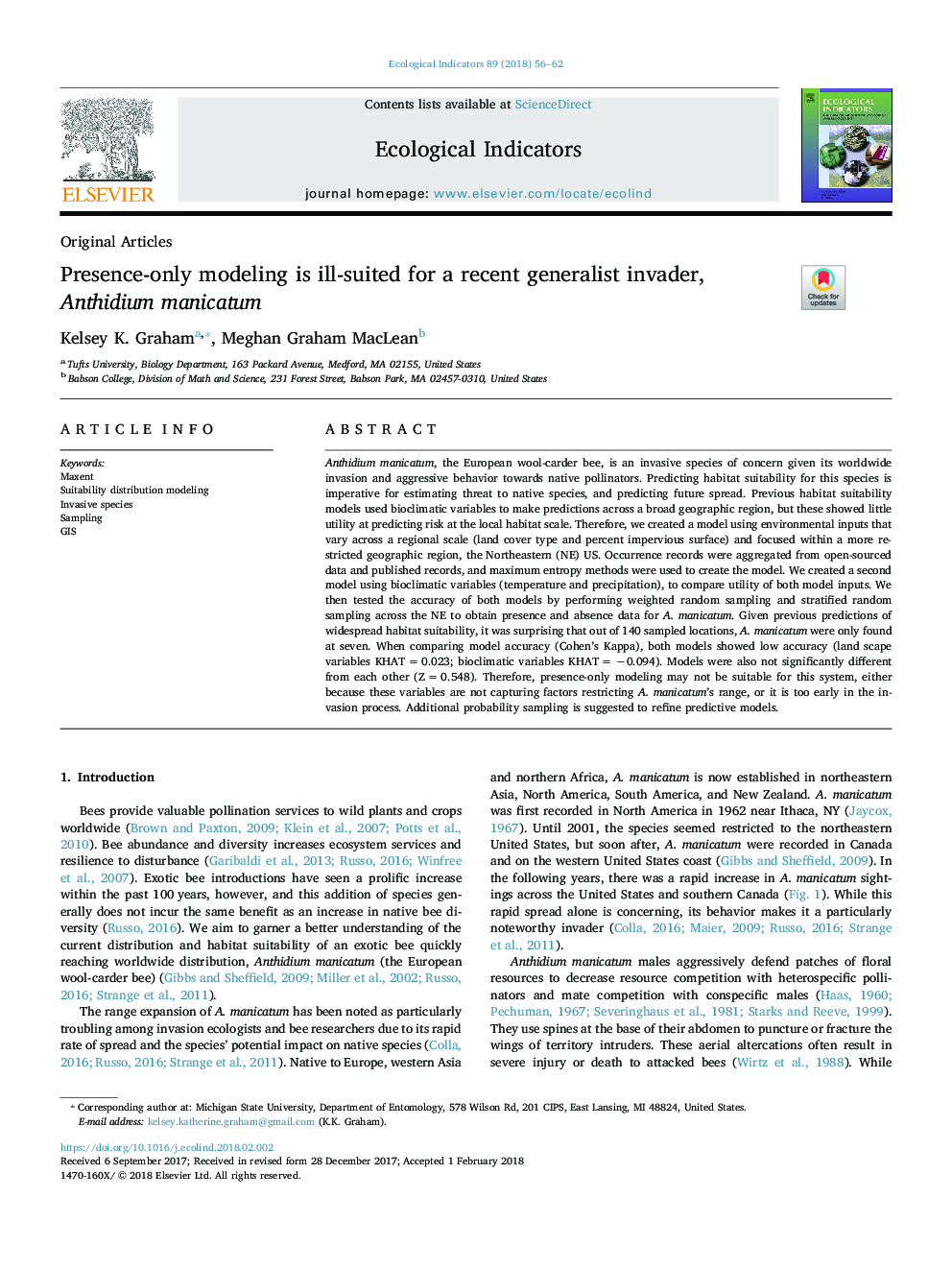| Article ID | Journal | Published Year | Pages | File Type |
|---|---|---|---|---|
| 8845432 | Ecological Indicators | 2018 | 7 Pages |
Abstract
Anthidium manicatum, the European wool-carder bee, is an invasive species of concern given its worldwide invasion and aggressive behavior towards native pollinators. Predicting habitat suitability for this species is imperative for estimating threat to native species, and predicting future spread. Previous habitat suitability models used bioclimatic variables to make predictions across a broad geographic region, but these showed little utility at predicting risk at the local habitat scale. Therefore, we created a model using environmental inputs that vary across a regional scale (land cover type and percent impervious surface) and focused within a more restricted geographic region, the Northeastern (NE) US. Occurrence records were aggregated from open-sourced data and published records, and maximum entropy methods were used to create the model. We created a second model using bioclimatic variables (temperature and precipitation), to compare utility of both model inputs. We then tested the accuracy of both models by performing weighted random sampling and stratified random sampling across the NE to obtain presence and absence data for A. manicatum. Given previous predictions of widespread habitat suitability, it was surprising that out of 140 sampled locations, A. manicatum were only found at seven. When comparing model accuracy (Cohen's Kappa), both models showed low accuracy (land scape variables KHATâ¯=â¯0.023; bioclimatic variables KHATâ¯=â¯â0.094). Models were also not significantly different from each other (Zâ¯=â¯0.548). Therefore, presence-only modeling may not be suitable for this system, either because these variables are not capturing factors restricting A. manicatum's range, or it is too early in the invasion process. Additional probability sampling is suggested to refine predictive models.
Keywords
Related Topics
Life Sciences
Agricultural and Biological Sciences
Ecology, Evolution, Behavior and Systematics
Authors
Kelsey K. Graham, Meghan Graham MacLean,
